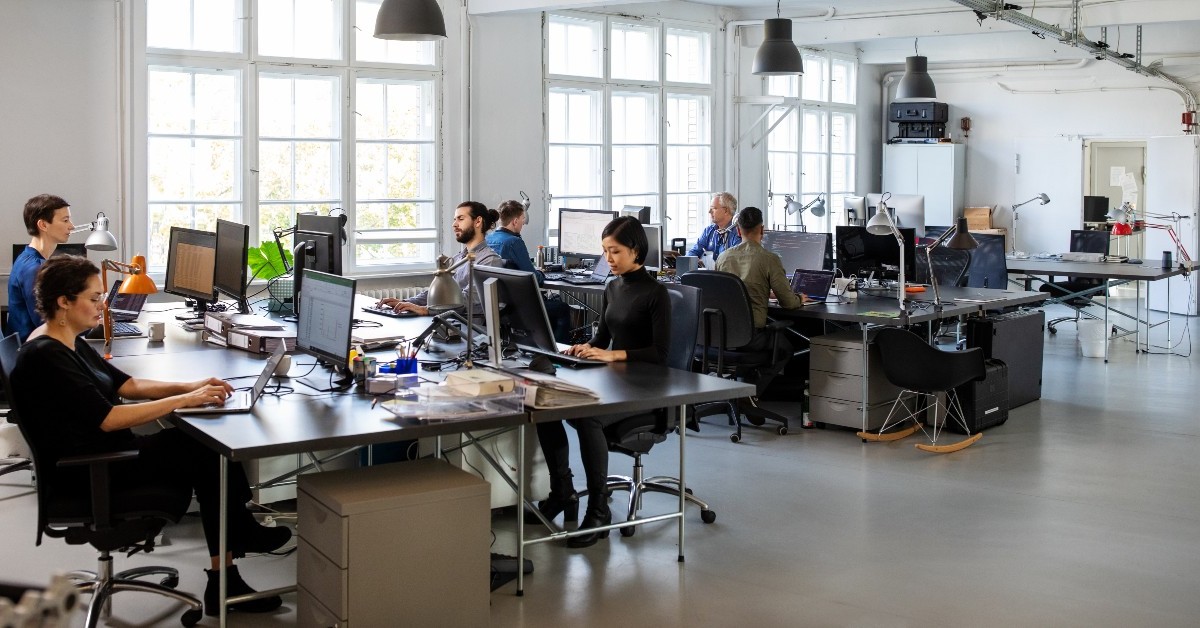When it comes to data breaches in Australia, the healthcare sector is one of the most vulnerable. According to a recent report by the Office of the Australian Information Commissioner (OAIC), from January to June 2021, the healthcare sector reported the most cases of a data breach, accounting for almost 20% of all notifications.
As a healthcare business, the safety of your patients and clients is paramount. Just as you use stringent clinical hygiene to protect their health, IT security is also vital to protect their sensitive personal information – particularly as healthcare businesses are targeted by hackers more frequently than businesses in other sectors, as shown by the OAIC data.
One aspect of good IT security that is often overlooked, however, is print management. To secure healthcare printing, it is crucial to understand why printing can pose a risk, and what you can do to mitigate these risks.
What are the security risks associated with healthcare printing?
Healthcare businesses are often dealing with highly sensitive information, such as patients' health records. Yet, in a public environment like a hospital or clinic, with many people coming and going, there are numerous opportunities for this sensitive information to be exposed.
Here are just some of the risks associated with printing in the healthcare sector:
- Documents left on the printer unattended: In a busy environment where workers’ attention is often being pulled in many different directions, it is not unusual for workers to forget they have printed out a document and leave it unattended on a printer. If there are several printers in the hospital, they may also be unsure which printer they have sent their document to and fail to collect it. Leaving documents unattended on a printer provides easy access for someone to simply pick them up and walk away with them.
- Unauthorised access of print data: Hospitals in particular are highly public places, with all manner of people coming and going: patients, patients’ friends and family, volunteers, delivery personnel, support staff and so on. It is difficult to keep tabs on everyone passing through the doors – and if someone happens to come across an unattended printer, they may not only be able to access the documents being printed, but also potentially access data stored on the printer’s memory.
- Unsecured printer networks: If the printer network is unsecured, the consequences of unauthorised access become even more serious. Someone with the right skillset could potentially access data from the printer’s file system or hard drive; use a compromised printer to attack other applications, execute arbitrary malicious code or threaten other systems within the organisation; secretly route data to another location; or gain access to the enterprise network through cloud printing channels.
How do you print healthcare records securely?
So how do you mitigate these risks? Here are 3 key steps you can take to secure the print environment in your healthcare organisation:
1. Implement print-release technology
With print-release technology, documents are not printed unless the authorised individual is physically present at the printer to release the print job from the device. This means:
- No more forgotten or lost documents sitting in the printer tray: Because workers have to be at the device to release their job, documents are not left unattended in the printer tray where anyone could pick them up.
- No unauthorised access of data: Workers need to authenticate themselves at the device before printing their job, so no one but the intended recipient will see that information.
- Workers can move freely between wards: Because workers can release the print job from any device in the hospital, they can use the device most convenient to them, meaning they can move around more easily and work more efficiently.
- One system for the entire hospital: Implementing a single system across the hospital makes it easy to train new employees or transfer them between wards. There is even scope to implement the system across multiple sites, to maximise efficiency and security gains.
It is important to implement a print release system that supports office and clinical printing. Clinical printing contains patient information while office printing involves business-sensitive data.
2. Choose specialised printers and multifunction devices with top security features
Specialised printers and multifunction devices often have security features that far outweigh those on typical home printers. This includes features like:
- strong user authentication controls
- data encryption
- stored data protection
- data overwrite function
- network monitoring
- intrusion detection
3. Choose a print service provider who has demonstrated experience in healthcare security
Your service provider should have a proven record in healthcare security and be able to demonstrate ways in which they can support your organisation in secure print management across the life of the device, not just at the time of implementation. Ideally, the service provider should have strong experience across the entire document lifecycle, not just in print.
Kyocera has been named a leader in document security by IDC MarketScape. We can help your organisation establish a print policy to streamline the ways in which documents are handled and improve users’ print behaviour to help keep information secure. We can also assist with the digitisation of stored files, further boosting efficiency and security.
As a healthcare business, maintaining the trust of your patients is of the utmost importance to the ongoing relationship – and protecting their sensitive information is key to retaining that trust. Don’t make the mistake of overlooking healthcare printing – it could not only be costly to your organisation, but also devastating to your patients.
The interplay of print and document security is increasingly complex in the era of remote work. But Kyocera customers can count on our industry-leading expertise and proven ability to protect their business. Download our guide to learn more about our specialised document security solutions.







